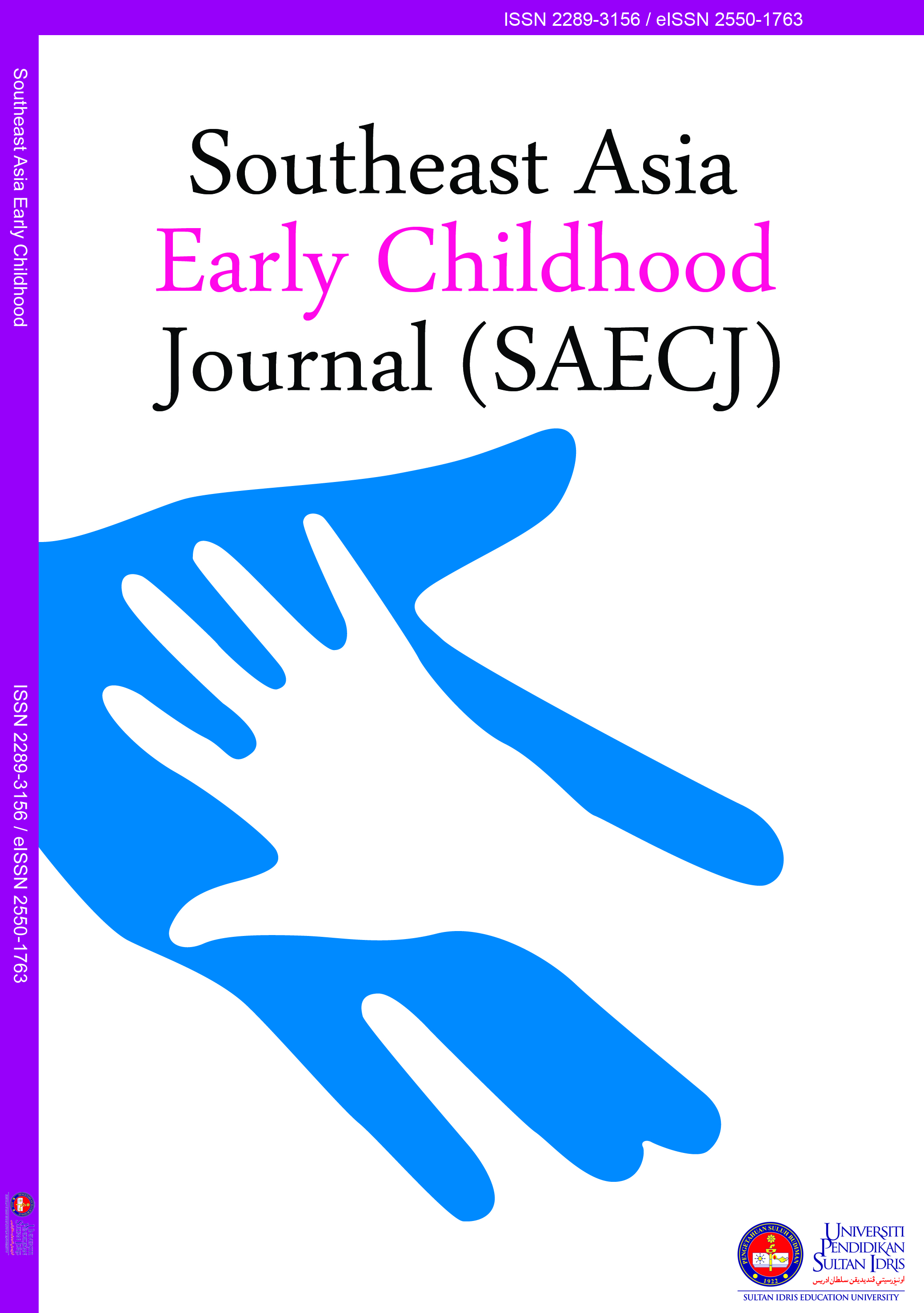Mentor-mentee programme for STEM education at preschool level
DOI:
https://doi.org/10.37134/saecj.vol9.no1.1.2020Keywords:
preschoolers, mentor-mentee, STEM educationAbstract
The objectives of this research were to; (i) determine mentors’ perspectives on their communication skills, teamwork skills, problem solving skills and social responsibility after joining the Mentor-Mentee Programme for STEM Education; (ii) identify the differences between the assessment of STEM mentors’ perspective on their personal qualities before and after joining the program; and (iii) identify the problems or challenges that the mentors experienced in mentoring activities compared to classroom teaching, opinions before and after participating in the program, and the challenges faced in the program. Based on the objectives, a survey research was conducted to collect data from 53 students (mentors) in the targeted population through questionnaire. Paired sample t-test was conducted to compare various skills of mentors before and after joining the program. For Communication Skills, the mean score for pre-test is 5.50, while mean score for post-test is 5.00. There was a significant difference in the scores for communication skills in pretest (M=5.00, SD=.86) and posttest (M=5.50, SD=.68); t (58) (=-3.785, p = 0.000). Teamwork skills also show significant difference in the scores in pretest (M=5.59, SD=.89) and posttest (M=6.06, SD=.67); t (58) (=-3.325, p = 0.002). Besides, Problem Solving Skills shows significant difference in the scores in pretest (M=5.00, SD=.99) and posttest (M=5.74, SD=.68); t (58) (=-4.897, p = 0.000). However, in the social responsibility skills, there is no significant difference between pretest (M=5.48, SD=1.11) and posttest (M=5.67, SD=0.85), t (58) (=1.086, p = 0.282). These results suggest that the program increases the communication skills, teamwork skills and problem-solving skills of mentors. However, the social responsibility skills do not show a significant difference although the mean score of posttest is higher than the pretest. This can be caused by the high social responsibility skills of mentors prior to the programs they have already been dealing with small kids. The sense of responsibility is higher than handling adults or students in primary or secondary school. In addition to this, some mentors mentioned they are not confident and worried about the STEM program. Nonetheless, positive findings were elicited from the interview. Mentors felt that they gained positive improvement and the program helped them increase their creativity. The mentors also suggested that the quality of module to be improved, competency of mentors to be upgraded, and duration of the intervention be extended. Quality in service instruction over STEM pedagogy best practices is a recommendation for practice.
Downloads
References
Counsell, S., Escalada. L., Geiken. R., Sander. M., & Uhlenberg. J. (2016). STEM learning with young children: Inquiry teaching with ramps and pathways. New York, NY: Teachers College Press.
Ritter, D. (2015). STEM for all children: Preschool teachers supporting engagement of children with special needs in Physical Science Learning Centers. Young Exceptional Children, 20(1), 3–15.
Ejiwale, J. (2013). Barriers to successful implementation of STEM education. Journal of Education and Learning, 7(2), 63-74.
Gay, L. R., Miles, G. E., & Airasian, P. (2011). Educational research: Competencies for analysis and applications (10th ed.). Boston: Pearson Education International.
Haggard, D. L., Dougherty, T. W., Turban, D. B., & Wilbanks, J. E. (2011). Who is a mentor? A review of evolving definitions and implications for research. Journal of management, 37(1), 280-304.
Hassan, M. N., Abdullah, A. H., Ismail, N., Suhud, S. N. A., & Hamzah, M. H. (2018). Mathematics curriculum framework for early childhood education based on Science, Technology, Engineering and Mathematics (STEM).
International Electronic Journal of Mathematics Education, 14(1), 15-31. Retrieved from https://www.iejme.com/download/mathematics-curriculum-framework-for-early-childhood-education-based-on-science-technology-3960.pdf
Ingvarson, L., Reid, K., Buckley, S., Kleinhenz, E., Masters, G., Rowley, G. (2014). Best practice teacher education programs and Australia’s own programs. Canberra: Department of Education. Retrieved from https://docs.education.gov.au/node/36787
Ministry of Education. (1997). Smart school flagship application: The Malaysian smart school: A conceptual blueprint. Kuala Lumpur, Malaysia: Government of Malaysia.
Morgot. K. C., & Kettler. T. (2019). Teachers’ perception of STEM intergration and education: A systematic literature review. International Journal of STEM Education. Retrieved from file:///C:/Users/USER/Documents/UPDATE%20KRJA%20DR.%20C/Teachers_perception_of_STEM_integration_and_educa.pdf
National Research Council. (2010). Adding it up: Helping children learn mathematics. In J. Kilpatrick, J. Swaford, & B. Findell (Eds.), Mathematics Learning, Study Committee, Center for Education, Divison of Behavioral and Social Studies and Education. Washington, DC: National Academics Press.
Noraini Idris. (2018). Early age best time to expose kids to science and maths. New Sabah times. October 6, 2018.
Oftedal, L. (2017) The Norwegian STEM strategy. Retrieved from http://nordicengineers.org/system/files/filedepot/9/Presentation%20Lene%20Norwegian%20STEM%20strategy.pdf
Terrion, J. L., & Leonard, D. (2007). A taxonomy of the characteristics of student peer mentors in higher education: Findings from a literature review. Mentoring & Tutoring, 15(2), 149-164.
Tytler, R., Osborne, J., Williams, G., Tytler, K., & Clark, J.C. (2008). Opening up pathways: Engagement in STEM across the primary secondary school transition. Canberra: Australian Department of Education, Employment and Workplace Relations. Retrieved from https://docs.education.gov.au/system/files/doc/other/openpathinscitechmathenginprimsecschtrans.pdf
Uttendorfer, M. (2014). Preparing teachers in mathematics for STEM education. In STEM education: How to train 21st century teachers (89-100). New York: Nova Science.
Downloads
Published
Issue
Section
License
Copyright (c) 2020 UPSI Press

This work is licensed under a Creative Commons Attribution-NonCommercial-ShareAlike 4.0 International License.





